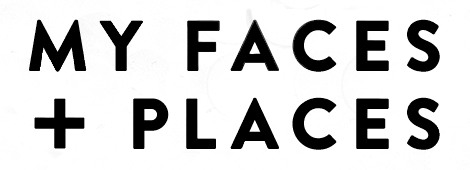The Mayor’s Walking Tour of Bath

Free Walking Tours of Bath
This travel article is a taster of the Mayor’s walking tour of Bath which lasts slightly more than 2 hours.
Why is the City of Bath one of the most visited cities in the UK?
Is it because –
- Bath is the only town in the UK where there is naturally heated mineral waters (from a geothermal spring). This is around the Centre of Bath City – Pump Room, Roman Baths, Thermae Bath Spa and Gainsborough Bath Spa.
- The author Jane Austen lived in Bath.
- Bath is designated UNESCO world heritage centre.
- The welcoming warmth of the people of the City of Bath with their hospitality which includes a Walking Tour of Bath with the compliments of the Mayor
Yes on all four points.
Bath is a UNESCO World Heritage Site for the whole city
It is unique in the UK for the whole city to have this award. Bath has a heritage of unique buildings and for the layout of buildings. All the buildings are clad with Bath stone (a local stone with a yellow colour) and more than 5,000 buildings are listed because of historic or architectural interest.
Early History: The Romans settled in Bath and built a temple Sulis Minerva (dedicated to the Goddess Sulis whom the Romans identified with Minerva) and baths with a spa centred around the hot water springs from 60AD. The settlement was known as Aqua Sulis (water of Sulis) became a sanctuary for rest as well as healing. It attracted visitors not only from this island but also from Europe. It was a walled area. There are street or place names that indicate its historical past – SouthGate, East Gate, WestGate Street and NorthGate Street. The Romans withdrew from Bath in the 5th Century after 300 years.
Bath Abbey (Mayor’s Walking Tour of Bath)

The West Wall of Bath Abbey. The carvings in stone are all stories which are decoded by the Guides in the Walking Tour of Bath.

Bath Abbey Door – The statues of St Peter and St Paul on either side of the door. Their heads are so different. Is there a story behind it? This is part of the Mayor’s Walking Tour of Bath.
Bath Abbey – There have been various churches at this site since 757AD. In 1499AD, Oliver King (the Bishop of Bath) noticed that the cathedral was in a state of decay and he initiated the rebuilding. His work, depicted as carvings in stone, can be seen on the West Wall.
Bishop Oliver had a dream of “Angels ascending and descending the ladder”. His dream of the ladders is carved in stone. He was so proud of his work that his name is carved in stone twice.
The Abbey is dedicated to the Apostles – St Peter and St Paul. Their statues are on either side of the Main door but on one side, the face is so different from the other. Why?
Why is it an Abbey not a Cathedral or Church?
Pitman Shorthand
Sir Issac Pitman, famed for his work on shorthand (speed writing), worked from this building in the 19th Century. This was at a time when more people were learning to read and write.
Empire Building
Previously the Empire Hotel, it was designed by the city architect, Charles Edward Davis. It fulfilled his ambition to build a city hotel to leave lasting legacy. The roof line tells a story with three different styles – the cottage, the house and the castle. Does it relate to the various classes of people? Is there a back story to the roof line?
Pulteney Bridge
Pulteney Bridge is only one of two in the world. It has shops built on the bridge. The other is Ponte Vecchio in Florence which is considered to be one of the world’s most beautiful bridges. Together with the Ponte Vecchio, they are a handful of historic bridges in the world.
Bath and the healing properties of the thermal spring water.
Bath gained a reputation for healing with the story of King Bladad. About 500 BC, Bladad spent much time in his youth studying in Athens where he contracted Leprosy. He realised that, as an imperfect prince, he was unable to take the throne so he worked as a swine herd further up the river from Bath. The pigs became infected and taking the advice of a local farmer, he took his pigs to the hot mud. He noticed that, the infection disappeared. It is said that he took to the mud and his skin cleared up. He returned to his tribe and became King. He then started a settlement at Bath.
People continued to come to Bath for the reputed healing properties of the water. Samuel Pepys in 1668, the famous diarist, wrote of Bath and the bathing “it cannot be clean to go so many bodies together in the same water”
Bath continued to grow. The population grew as more buildings and houses were built. By the mid 18th Century, The iconic buildings which included The Circus, Queen Square, Royal Crescent, Pump Room, Pulteney Bridge, Great Pulteney Street, Assembly Rooms, Theatre Royal and the Guildhall were built. Bath by the late 18th to early 19th Century had become the cultural centre which included the likes of Jane Austen, Oliver Goldsmith, and later Charles Dickens, artist Thomas Gainsborough together with the major political figures like Lord Nelson, Josiah Wedgwood, William Pitt, Lord Clive and the explorer Dr David Livingstone.
All this development was because people were coming for the healing properties of the water. The official confirmation of the healing properties of water was the building of The Royal Mineral Water Hospital. It treated patients using mineral water until 1978 when more modern methods of treatment became available.
Iconic Buildings of Bath
The Circus
The buildings in The Circus have a number of interesting features – The curved façades have the 3 classical orders (Doric, Ionian and Corinthian) of pillars with one above the other. The buildings are adorned with 525 pictorial emblems, including serpents, nautical symbols and devices representing the arts and sciences together with Masonic symbols The parapet is adorned with stone acorn finials.
The Royal Crescent
The Royal Crescent – There is a Royal Crescent Hotel and a Museum of Bath Architecture there – Where are they?
The layout of the buildings on Royal Crescent and the The Circus are totally unique. It was originally designed by John Wood (the elder) and completed by his son John Wood (the Younger). They were members of the Freemasons and their developments carried a number of these symbols.

Google Earth Image – The layout of the key – The Circus and Queen Square as the Key Handle (or bow) and the Key. The Obelisk in Queen Square is the centre of the key.
The Jane Austen Centre
Jane Austen lived in Bath for a period of 5 years and all her novels mentioned the Bath. The Jane Austen Centre provides guidance and information of the Author and of Regency Bath.
Conclusion for the Mayor’s Walking Tour of Bath
This travel article has provided you with a taster of the Mayor’s Walking Tour of Bath.
Who are the guides? I had Deedee leading this walking tour of Bath. She was just wonderful in the guiding us – telling us interesting stories at the various stages of the walking tour. Although trained by the Mayor’s office, off on her own back, she attended University courses on the history of Bath and British Monarchy so that she could speak with authority and answer any question on this subject thrown at her.
My God, she is good. One of the best that I have had in my extensive travels.
The Members of the Mayor of Bath’s Corps of Honorary Guides are unpaid volunteers doing a sterling job sharing the beauty of this city with the millions of visitors coming to Bath by leading the Walking Tour of Bath.
The City of Bath is listed as a UNESCO World Heritage Site.
About Dr Michael Oon:
Michael was brought up in Singapore and came to the UK for schooling. He was a forensic scientist at the Metropolitan Police Forensic Science Laboratory (New Scotland Yard, London) for 20 years. He is now a consultant practicing traditional feng shui and works with property developers. He specialises in helping to sell property faster. He has travelled extensively around the world as part of his work and together with his wife Helen.
Another Post relating to Bath Spa – An overview
Follow my blog with Bloglovin
All rights reserved © 2015-2016 MyFacesAndPlaces.co.uk

















